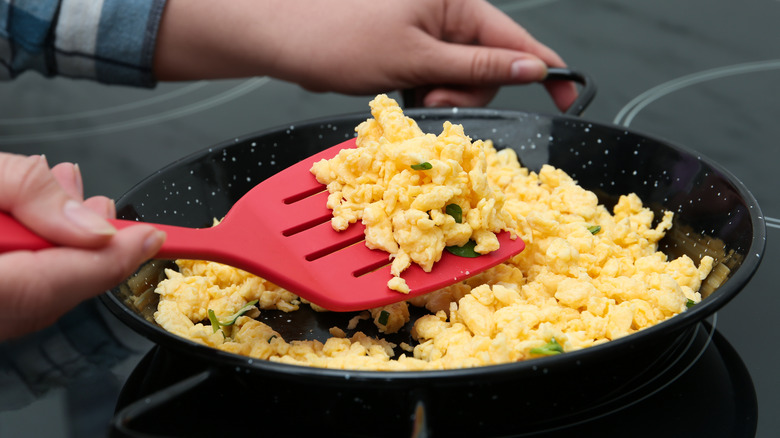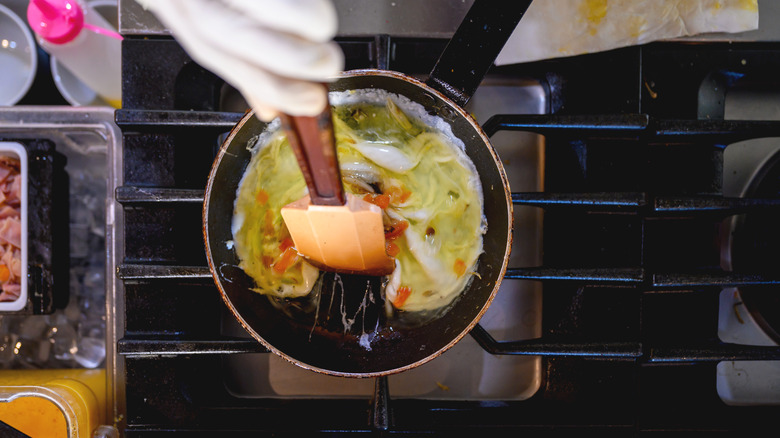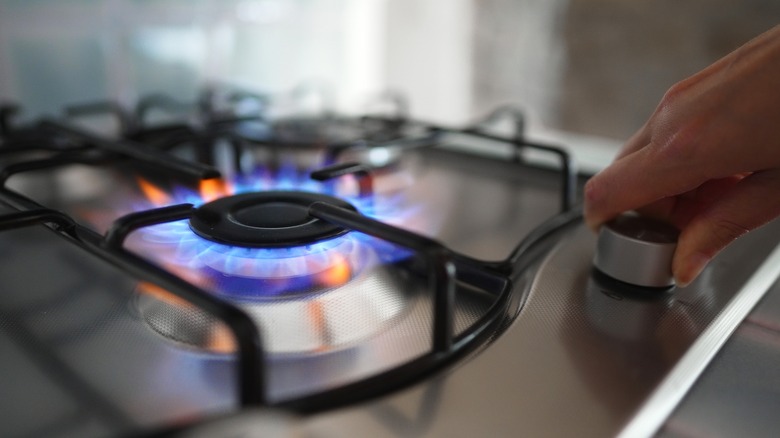The Spatula Mistake That Makes Scrambled Eggs A Messy Nightmare
Right up there with pancakes and a crispy plate of bacon, scrambled eggs are perhaps the epitome of an American breakfast. While this soft, fluffy protein is a common sight in kitchens and dining rooms worldwide, there are so many different tools and techniques to try during the cooking process, and some are much better than others. While good scrambled eggs are fairly easy to whip up, an amazing plate of eggs is much harder to come by. So, if you want to get there, it's time to start making some changes with how you're cooking your eggs.
For example, one common spatula mistake that makes scrambled eggs a messy nightmare is using metal tools. That's right, it's time we start ditching the forks and aluminum spatulas. The soft, fragile proteins in eggs sticks to these tools, often making for sloppy, uneven scrambles. One of the best kept secrets for making scrambled eggs that all breakfast lovers should know is to always opt for flexible tools when cooking eggs instead. Non-stick or silicone spatulas are the best options. These tools can gently push and fold eggs around a pan without disrupting the cooking process, as liquids slide off of them effortlessly.
The additional benefits of non-stick spatulas
Not a lot goes into making scrambled eggs. While some might consider that a great thing for beginner chefs, it also means the ingredients and tools have to be just right for the dish to shine. For scrambled eggs, tools made of wood, plastic, or rubber are king. Aside from keeping your scrambles intact, silicone and non-stick spatulas are much easier on your pans too, which will easily chip and scratch under the pressure of harsh metal tools. So, using non-stick tools can not only make for better eggs, but they can also prolong the lifespan of your pots and pans too.
Because we advise against metal tools, you might wonder if using a metal pan is a good option for eggs. Well, since most pans are made from metals, like stainless steel or cast iron, yes, metal pans are technically okay to use, but there's always the risk of the eggs sticking. As a result, non-stick varieties are really the ideal choice to avoid a messy scramble. No matter which pan you choose, make sure to load plenty of fat onto its surface before adding any eggs. This creates a nice barrier between the pan and the fragile liquid of the eggs to prevent further sticking.
Other scrambled egg mistakes you're probably making
Beyond choosing the right spatula, there are plenty of other mistakes everyone makes with scrambled eggs you should start to avoid. For starters, stop whisking your eggs too early. Mixing eggs before they hit the pan is done for more reasons than just incorporating the proteins of the eggs together. This process introduces air into the eggs too, which helps them become a truly fluffy end product. If you let your eggs sit before scrambling, they will deflate and end up limp when they reach your plate, so mix your eggs together just before you heat them for the best possible results.
Another easy trap to fall into is overcooking. Eggs still cook slightly when taken away from their heat source, so you should always remove eggs from the pan just before they're completely done to prevent dry, unsavory scrambles. (Only your spatula should be rubbery, not your food.) Similarly, because eggs sook so quickly, the best burner temperature for creamy, fluffy scrambled eggs is a low heat setting to again prevent any overcooking.
Eggs might be easy to make, but don't let them fool you. These fragile proteins will only come together right if you follow a few rules first. So, for a truly memorable breakfast, try to remember a few of these tips for next time.


